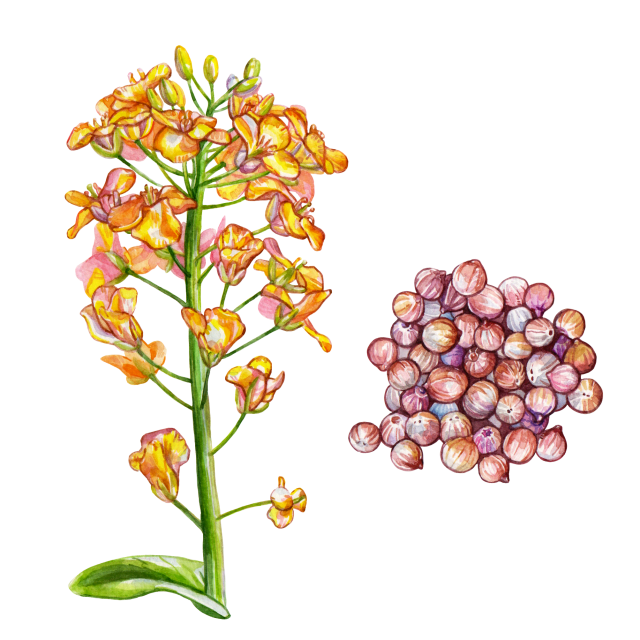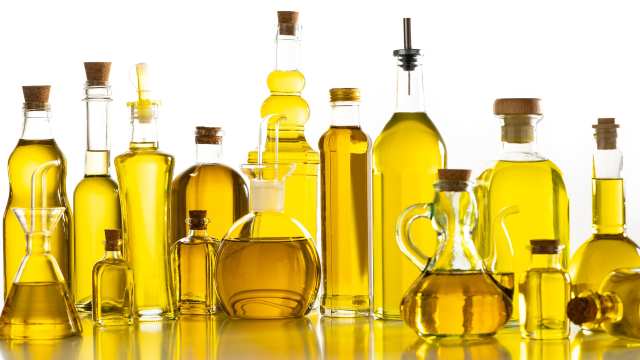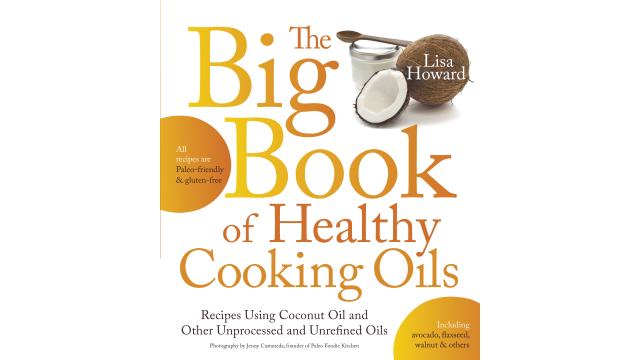Canola oil

Ingredient: Canola oil
Latin name: Brassica napus ssp. napus
Other names: low erucic acid rapeseed (LEAR) oil
Uses: cooking oil
What is canola oil?
Canola oil comes from the seeds of the rapeseed plant, a yellow-flowered member of the mustard family (Brassicaceae). Specifically, canola is a variety of rapeseed that was bred to remove most of the harmful and unpleasant-tasting erucic acid. Prior to this plant breeding success, rapeseed oil was considered unsafe to eat because of the risk of cardiac damage. (Similarly, mustard oil is not allowed to be sold as food in the United States because of its erucic acid content; however, essential oil of mustard or volatile mustard oil are listed as “generally recognized as safe” for consumption.)
Is canola oil healthy?
The health benefits of canola oil have more recently become a bit controversial. Canola oil is low in saturated fats and high in monounsaturated fats, making it a heart-healthy alternative to animal fats. In addition, compared to sunflower oil, canola oil can reduce your total cholesterol and low-density lipoproteins — the kind of cholesterol that increases your risk of heart attack.
However, newer research now shows that the ratio of omega-6 to omega-3 in canola oil is much higher than recommend. This imbalance is linked to obesity, heart disease, and Alzheimer’s disease since omega-6s are more inflammatory.
In addition, since over 90% of canola crops today are genetically modified and the conversion to oil typically uses a chemical called hexane, most canola oil can include high exposures to chemicals and GMOs. Look for organic cold-pressed canola oil to get the benefits of its monounsaturated fat profile and avoid the health risks from conventional canola oils.
What does canola oil taste like?
Canola oil has a very mild and neutral flavor and none of mustard’s pungency, making it a good all-purpose cooking oil. It also has a high smoke point, so you can deep-fry in it. If it smells or tastes fishy, it’s probably gone rancid, and you should recycle it.
How do I use canola oil?
You can use canola oil for baking, emulsions (like mayonnaise), poaching, sautéing, and frying.
What does canola oil pair well with?
Because of its neutral flavor, you can use canola oil in pretty much any culinary application that needs the fat to take the back seat, flavor-wise. Its ideal uses are for baking and frying, and you can use it with other mild-flavored ingredients that would buried under a more dominant-flavored oil (like olive or nut oils).
Where does canola oil grow?
As its name implies, canola is primarily grown in Canada, but China and India also produce much of the global crop. There has been recent controversy over growing canola in Oregon’s Willamette Valley, where it’s been under strict limitations for more than 30 years because the region is a global epicenter of seed production. Some farmers fear canola will hybridize with higher-value brassica seed crops.
How to buy canola oil:
You can find canola oil in any mainstream grocery store, sold in jugs and bottles alongside other cooking oils. Store it away from direct sunlight and heat to extend its shelf life.
Fun canola oil fact:
Though rapeseed oil is one of the oldest vegetable oils used by humans, canola is a very recent phenomenon, developed by crop scientists in the early 1970s. The name “canola” is used generically today to distinguish it from industrial rapeseed oil, but it was originally a trademarked name originating from a mashup of Can- (University of Manitoba in Canada is where the rapeseed plant was bred to reduce its erucic acid content) and -ola, short for “oil, low-acid.”


